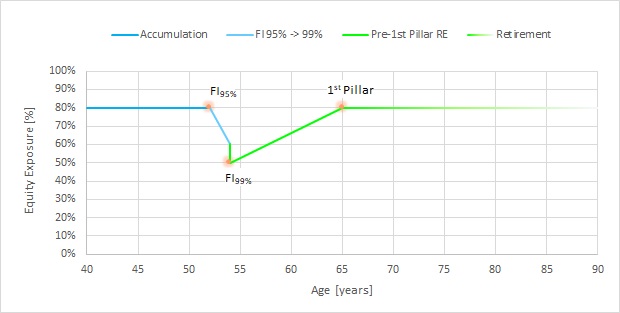a) i’m currently ‘fire-d’ (tough to call any plan actually safe) with the goal to withdraw my current expenses semi-annually as well as to ideally keep my current net worth, both adjusted for inflation.
b) i’m currently heavily underweight equities and hoping to scale in at better prices within a year or two. i’ve been a stock picker for the last few years but planning to be way more passive.
c) i’m currently most bullish on / comfortable with usa and switzerland. i currently don’t love the risk/reward of most emerging countries (politics, currencies) or shrinking countries.
d) i don’t like too much weight on large caps only. i also don’t want a lot of securities lending.
e) my current target allocation looks like this:
equities 66% / bonds 33% / cash 1%
f) my current target portfolio looks like this:
stocks
us: spy 12%, mdy 12%, qqq 6.5%
ch: spmcha 12%, chspi 6.5%, chsri 6.5%
eu: uimr 6.5%
individual: 4%
average ter: 0.18%
average div yield: 1.75%
biggest sectors: industrials 15.9%, technology 15.2%, financials 14.6%, health 13.6%
biggest co’s (via etfs): apple 1.7%, nestle 1.6%, roche 1.6%, microsoft 1.4%, lindt 1.3%
bonds
chf only (chcorp 10% / rest is individual, corp & pfandbrief)
let me know if there are suggestions, comments, questions, thanks.
